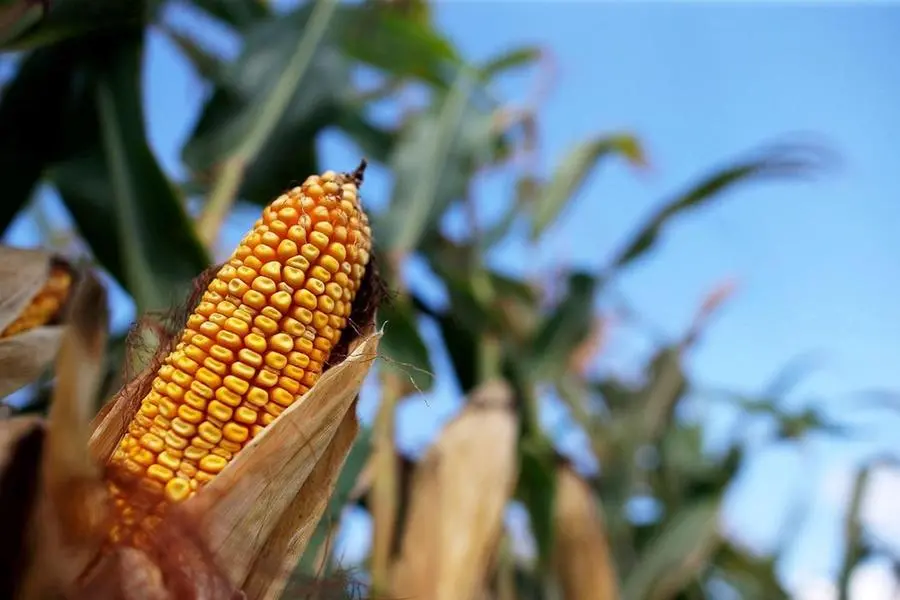PHOTO
Image used for illustrative purpose. Corn is seen in a field in Morocco, Indiana, U.S. September 6, 2016. Jim Young, Reuters
(The opinions expressed here are those of the author, a market analyst for Reuters.)
NAPERVILLE, Illinois - Speculators entered July with their most bearish ever midyear views on Chicago corn and soybeans, and prices have recently touched the lowest levels since 2020 as supply fears have all but vanished.
In the week ended July 2, money managers expanded their net short in CBOT corn futures and options to 336,538 contracts from 277,666 a week earlier, nearing the all-time short of 340,732 contracts set this February.
That is according to data published by the U.S. Commodity Futures Trading Commission on Monday afternoon, postponed from the normal Friday release due to the July Fourth holiday.
Two-thirds of funds’ latest corn sell-off owed to exiting longs, and the move was associated with a 5% slide in CBOT December corn futures. Corn on June 28 dipped below $4 per bushel for the first time since November 2020 as the U.S. Department of Agriculture estimated U.S. plantings well above what analysts expected.
Real-time, money managers may be sitting at record-short levels in corn as December futures have dropped another 3.2% over Wednesday, Friday and Monday.
USDA on Monday afternoon reported a 1 percentage-point improvement in U.S. corn and soybean conditions against expectations for unchanged ratings. Mostly benign U.S. weather, both observed and forecast, has weighed on corn and soy futures.
CBOT November soybeans on Monday settled at $10.99-1/2 per bushel, the most-active contract’s first sub-$11 finish since November 2020. Monday’s trade capped off losses of 1.2% for soybeans over the last three sessions.
November beans gained a tick in the week ended July 2, but money managers for a fifth consecutive week expanded their soy net short, which rose to 140,926 futures and options contracts from 129,663 a week earlier. The record is 171,999 contracts set in early March.
Speculators had raced out of huge soybean shorts throughout May on Brazilian crop concerns, but those eased again in June. USDA’s attache a week ago trimmed its 2023-24 Brazilian soy crop by 2.6 million metric tons to 150 million, below USDA’s official view of 153 million.
USDA’s June 28 reports were neutral for soybeans as plantings came in below expectations but quarterly stocks landed above. USDA’s monthly supply and demand report is due on Friday at noon EDT (1600 GMT).
SOY PRODUCTS AND WHEAT
CBOT December soybean oil surged 9.1% in the week ended July 2, its best run in a year, and money managers were net buyers of more than 46,000 futures and options contracts, the most for any week since August 2019. That slashed their net short to 61,854 contracts and was predominantly the result of short covering.
December soymeal fell more than 4% in the week ended July 2, and money managers were net sellers for a second straight week, reducing their net long to 73,459 futures and options contracts from 87,367 a week earlier.
December meal traded to $320.60 per short ton on Monday, the most-active contract’s lowest level since October 2021. December soyoil hit three-month highs on Friday and rose more than 3% in the last three sessions, though Monday’s settle of 48.26 cents per pound is below the same date in the previous three years, when oil was trading closer to 60 cents.
CBOT September wheat futures rose almost 4% in the week ended July 2, but money managers added about 3,500 contracts to their net short, which reached a 10-week high of 73,974 futures and options contracts.
Wheat futures eased about 2% over the last three sessions, though Monday’s settle of $5.70-1/2 per bushel is above the September contract’s low of $5.50 set in early March. Karen Braun is a market analyst for Reuters. Views expressed above are her own.
(Reporting by Karen Braun Editing by Matthew Lewis)





















